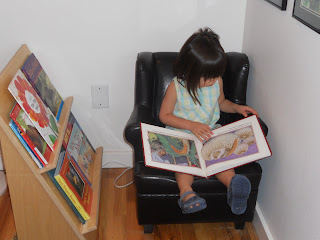Being landlocked, many of our students have rather limited experience with mollusks. Mollusks are one of the most diverse animal phyla (in terms of both size and anatomical structure). They are second only to arthropods in numbers of living species. The term mollusks dates back to Aristotle's description of "the soft things;" they are generally characterized as having a soft, slimy body, a muscular foot (which secretes mucous to aid in movement), and a mantle, with a significant cavity used for breathing and excretion. Many mollusks also have shells which consist of chitin hardened with calcium carbonate that the mollusk has removed from their environment. The vast majority of mollusks are marine organisms, although there are freshwater and terrestrial mollusks as well.
Most mollusks (nearly 80%) are gastropods (slugs, and snails), although cephaloapods (octopus, cuttlefish, nautilus, and squid), and bivalves (oysters, clams, scallops, and mussels) are also common.
We began our unit on mollusks with a concrete experience with some familiar specimens; the children went out to the garden after a recent rainstorm and found some slugs happily feasting in the mulch pile. Although banal, slugs are one of the best examples of mollusks for children to interact with; the children can safely hold them, the animated slugs willingly crawl across their hands, and the children are able to see the basic structures of a mollusk (the foot, tentacles, and eyes) very clearly due to the absence of a shell.
 Then the children began rearing some pond snails to learn more about the lifecycle of mollusks. Our pond snails began as a gelatinous cluster of eggs loosely attached to elodea leaves. Young snails hatch from the eggs; the juvenile snails already have shells which continue to grow over the course of their lives.
Then the children began rearing some pond snails to learn more about the lifecycle of mollusks. Our pond snails began as a gelatinous cluster of eggs loosely attached to elodea leaves. Young snails hatch from the eggs; the juvenile snails already have shells which continue to grow over the course of their lives. Finally, the children were treated to a hands on experience with some living specimens of oysters, clams, mussels, and squid. The children gathered in small groups to feel and observe the creatures as we discussed their general characteristics and anatomy.
Finally, the children were treated to a hands on experience with some living specimens of oysters, clams, mussels, and squid. The children gathered in small groups to feel and observe the creatures as we discussed their general characteristics and anatomy.
 After these experiences with living organisms, the children were ready to begin working with some independent lessons. Many children were very interested in exploring pearls and some beautiful specimens of mollusk shells (including a nautilus shell, several beautiful conchs, a volute, and a lionspaw scallop). They used some classroom resources (including The Shell Book
After these experiences with living organisms, the children were ready to begin working with some independent lessons. Many children were very interested in exploring pearls and some beautiful specimens of mollusk shells (including a nautilus shell, several beautiful conchs, a volute, and a lionspaw scallop). They used some classroom resources (including The Shell Bookby Barbara Hirsch Lember, a lovely out of print guidebook of North American shells written for children that consists of beautiful still life photographs) to learn more about the shells and the mollusks that made them.





Many of the children also enjoyed matching sea shells to their names and two dimensional ink drawings of them. The older children were also able to classify the shells into gastropods, bivalves, and scaphopoda based upon their characteristics.





 and reading books describing mollusks, their general characteristics, and their lifecycle (there are more children's fiction and non-fiction books about mollusks than you might imagine!).
and reading books describing mollusks, their general characteristics, and their lifecycle (there are more children's fiction and non-fiction books about mollusks than you might imagine!). Although I admit to being envious of Montessori communities that can go on an outing to the shore and explore a tide pool, there is no doubt in my mind that even those amongst us that have never even set foot on a beach share some fascination with these interesting creatures and an appreciation for their beautiful creations. What a pleasure to watch these young children in the process of discovering the beauty and wonder of the natural world.
Although I admit to being envious of Montessori communities that can go on an outing to the shore and explore a tide pool, there is no doubt in my mind that even those amongst us that have never even set foot on a beach share some fascination with these interesting creatures and an appreciation for their beautiful creations. What a pleasure to watch these young children in the process of discovering the beauty and wonder of the natural world.
.JPG)



Great! Where did you buy all your cards from?
ReplyDeleteThank you! Glad that you liked them. You can order the cards from lots of Montessori suppliers, or directly from www.maitrilearning.com
ReplyDelete